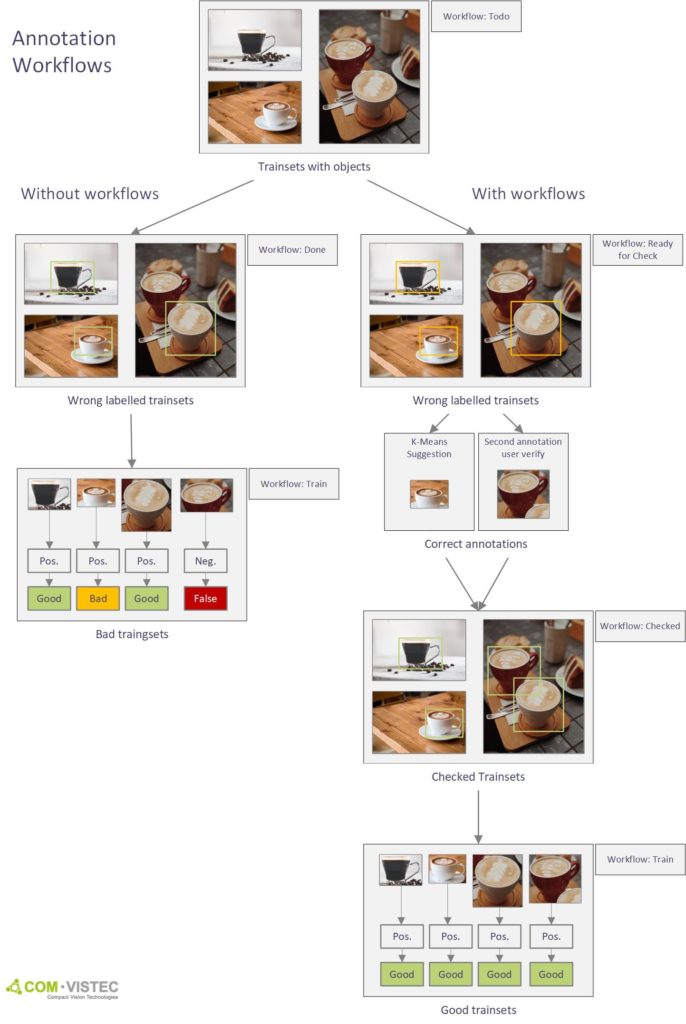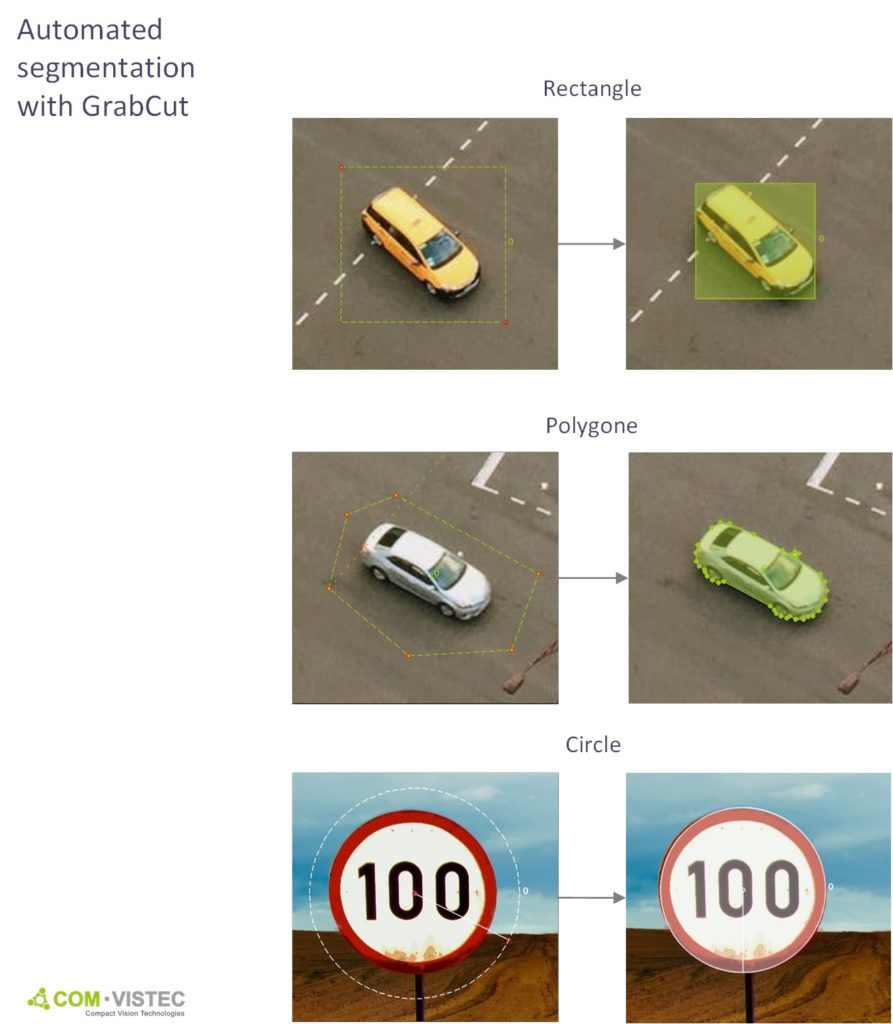To ensure the training of a dnn successful it is important to keep track of the progress and check the data even before the training starts. Especially with bigdata and industy4.0 this can be a problematic. With a quality assurance process, you could improve your deep learning results.
To solve this issue we created two features for our annotation tool called „Verify Annotation“, „Workflows“ and „Assits“. Also working with multiple users will be posible in the future.
- Verify Annotation
- Workflows
- Assists
Verify Annotation
This method saves the quality assurance process by an important process. With our new „Verify Annotation“ mechanism you can display all single segmentations for every dnn class. If you find any wrong segmentations, you are able to jump to the specific image and edit it. This allows you to check and correct your data right before the training starts. We currently working on an intelligent algorithm based on K-Means to automate this process even further. This process can be used for classification before or after segmentation.

Workflows
In addition we are working on our new „workflows“ feature. We enable the user to easily observe the process of segmentation regardless how much data you have.
A workflow is representing a specific order of steps in your process. For example, you can set up a process with the following workflow:
“Todo” -> “Ready for check” -> “Checked”.
You can label your data and control which steps or security checks are going to happen in the next step of the workflow. This is especially helpfully whenever you work with „negative data“, which means data without relevant objects in it. With a regular checking function, this data would remain undetected, but with our workflows you can manage negative data just like any regular data.

Assist
We also added some minor quality assurance features to improve the efficency in which you can label your data even more. We would like to introduce some of these features we developed to make the labeling process smoother and faster.
First off you can now filter the current image you are working on by classes, which means you can hide every other labeled data which doesnt match your current class. This makes labeling of images with a lot of diffrent object way easier.
In addition we added a feature to add an example image and a description for every class. The example image and the description ensure it is easy for every user to remember how to use the class and what items should be labeled. For example you can use the description to write down important information about the class and how to use it and label data with it. Together with the example image there is no room for mistakes left behind and your coworkers and you know exactly how to label your data the right way.
Speaking of descriptions and sharing information with your coworkers we also added a comment feature for every image. It allows you to write a comment for every single image. So if there is anything in the image that you might want to remember or revisit later you can write it down. You can also use this feature to make notes you want your coworkers to see whenever they open the image. Collaborate and sharing important information with your team has never been easier.
We also improved your possibilities when its about creating ROI’s. We improved our GrabCut algorithm to work even better. Also we added construction lines which will show you how the ROI will change.

If you have set a ROI you can now choose to show only the borders of the ROI or show the whole ROI filled with the color of the ROI’s class.
Last but not Least we added the Zoom Window. It is a small Window which shows you the area around your mouse zoomed in by a amount you can choose. With this feature you can label the border of objects way easier. The Zoom Window also comes with a list of assist modes which you can apply to it. For example you can apply a sobel filter to highlight borders and make them even more visible to you. Another assist would be the option to convert the image into grayscales which can be usefull for data labeling aswell.
All these quality assurance features we developed have the goal to further improve our tool and make your process of labeling data and creating your neuronal nets smoother and faster. These and new other features will be released in the next version.